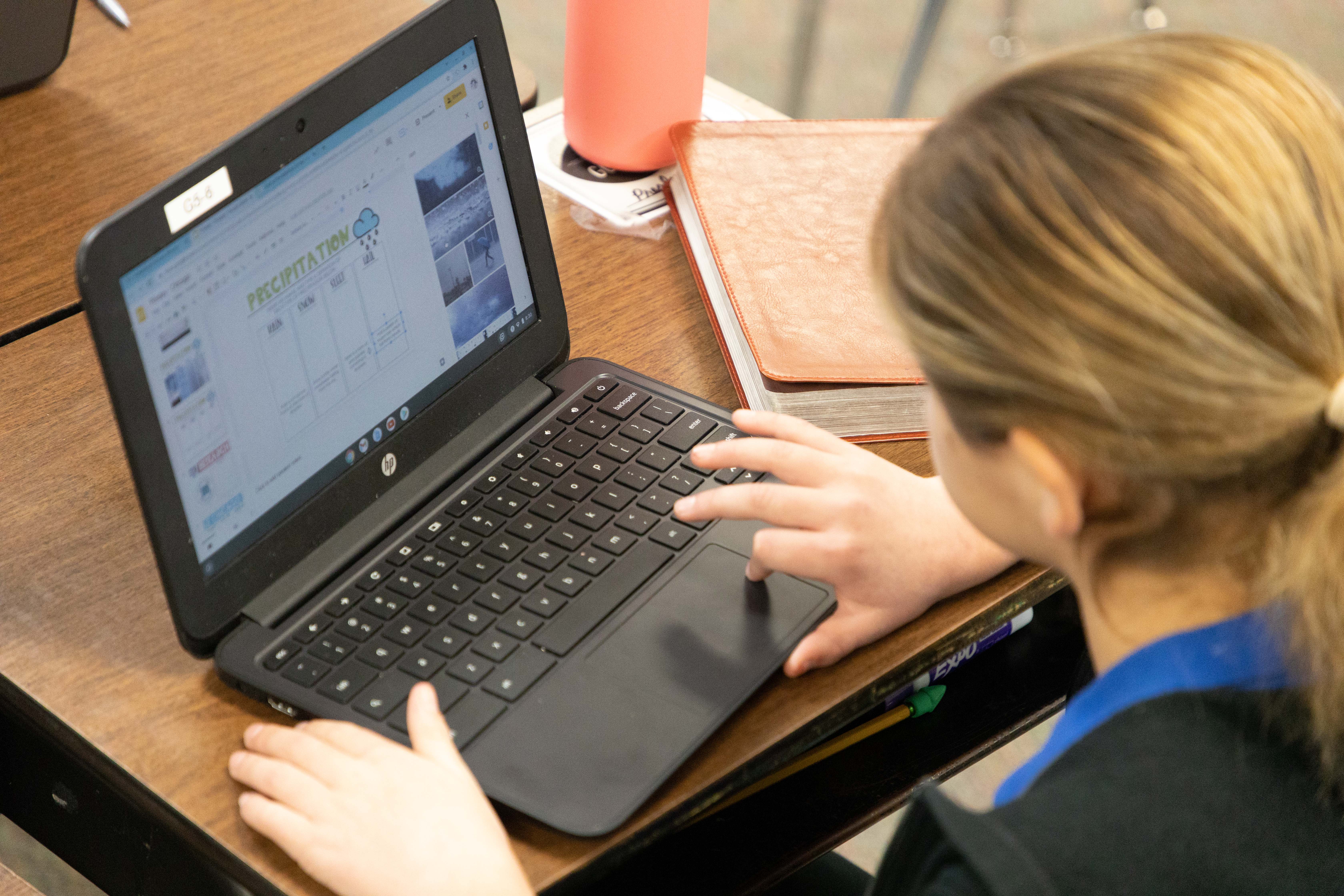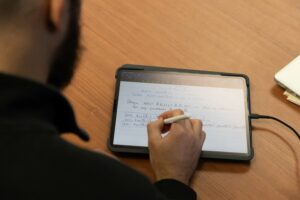Philosophy of Technology Integration

At Grove Christian School, technology is not a class or an event, but it is meaningfully integrated across the curriculum to enhance and promote learning in every subject. Students at all levels develop skills to use technology as a tool to research, organize, evaluate, and communicate. Students are trained in basic operations, social and ethical issues, critical thinking skills to solve problems, and level-appropriate technology research and communication tools. As part of a 21st century education, technology is used throughout the school day by teachers and students alike to collaborate, communicate, and innovate. Students have access to Chromebooks, Android tablets, iMacs, and iPads, as well as a state-of-the-art Media Arts Suite.
Through this integrated technology approach, students are prepared to engage emerging technologies with confidence and a Christ-centered worldview as the ever-changing landscape of innovation will continue to affect their learning and future careers. According to a literature survey of pedagogy, technology, and faith, “teaching and learning with digital technologies requires intentional Christian consideration and design” (Sevensma et al., 2018, p. 268).
At Grove Christian School, intentional technology integration across the curriculum is grounded in our mission and vision as a 21st Century Leadership Academy for Christ. The driving motive for all GCS instruction is to equip servant leaders to follow Jesus to transform generations and nations and impact the world. This approach to technological pedagogy is based on the understanding that “technologies are more than means for instruction. They are also opportunities for being stewards of the unfolding Creation and expanding culture” (Schultze, 2004, p. 14 ). The purpose for technology integration is to develop culture creators who can influence our digital world with the gospel of Christ (Batterson, 2019).
In order to achieve this, our goal with the Digital Design Plan is “not to be dazzled by new technologies or trends but to focus on pedagogical transformation” (Smith and colleagues, 2020, p. 49). Digital tools can powerfully promote effective teaching and learning, lifelong inquiry, higher-order thinking, as well as differentiation and inclusion. However, we acknowledge the importance of discernment as we develop digital citizenship for the next generation of servant leaders for Christ.
References:
Batterson, M. (2019). Chase the Lion: If Your Dream Doesn’t Scare You, It’s Too Small. Multnomah Books.
Schultze, Q. J. (2004). Faith, Education and Communication Technology. Journal of Education & Christian Belief, 8 (1). pp. 9-21.
Sevensma, K. et. al. (2018). Seeking a scholarship of pedagogy, technology, and faith: A literature survey. International Journal of Christianity & Education, 22 (3). pp. 252-273. Doi: 10.1177/2056997118782514
Smith, D. I., Sevensma, K., Terpstra, M., McMullen, S. (2020). Digital Life Together: The Challenge of Technology for Christian Schools. Eerdmans.
Smith, D. I. & Shortt, J. (2005). Editorial: Technology, Learning, and the ‘Ephesian Moment’. Journal of Education & Christian Belief, 9 (1). pp. 3-6.


